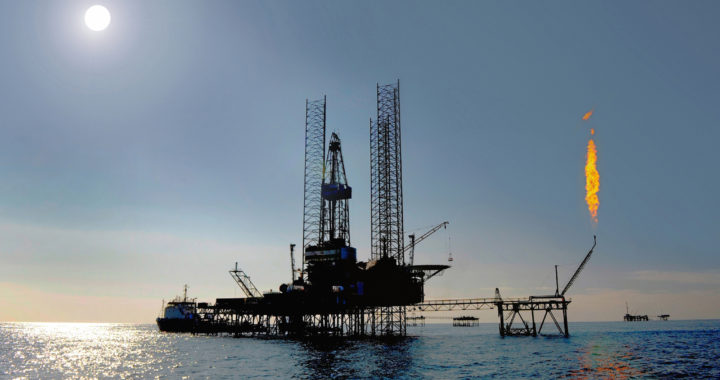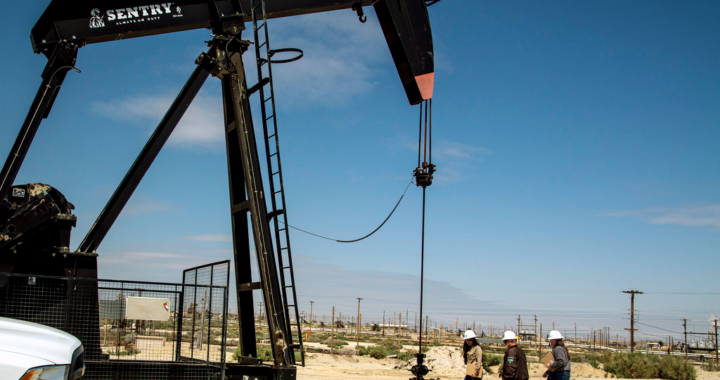In late August, President Donald J. Trump announced a “big trade agreement” with our neighbors to the south, Mexico. A major portion of the United States-Mexico Trade Agreement would address issues with the North American Free Trade Agreement, such as the “sunset clause.”
Category Archives: Industry News
What Does the Caspian Sea Deal Mean for the Future of Oil and Gas?
During the reign of the Soviet Union, the Caspian Sea was considered a natural border, evenly divided by Russia and Iran. In the years following the fall of the Soviet Union, however, the Caspian found itself straddled by five new countries. For decades, Russia, Iran, Kazakhstan, Azerbaijan, and Turkmenistan have vigorously disputed ownership of the land-locked sea. On Sunday, however, the nations took their first step toward a peaceful distribution of the Caspian’s vast natural resources signing the Convention on the Legal Status of the Caspian Sea.
The landmark agreement boils down to a mathematical formula that will divide the seabed of the Caspian between the five nations while retaining the surface of the sea as international water.
The Caspian’s Impact on Oil and Gas
First and foremost, the Caspian Sea deal creates a new avenue for the flow of oil and gas back and forth between Europe and Asia. Several Caspian nations have begun work on pipelines that will swiftly carry extracted oil and natural gas east and west. This development has the potential to expose a lot more customers to Russia and the Central Asian energy market.
The Caspian Sea deal is also significant because it brings with it the possibility of massive oil reserves finally seeing the light of day. Estimates put the Caspian Sea’s resources around “48 billion barrels of oil and 8.7 trillion cubic meters of gas in proven or probable reserves.”
Those vast reserves paired with the multiple pipelines under construction could turn the Caspian Sea into an oil and gas powerhouse.
It’ll Still Take Time to Get Things Fully Sorted Out
If all of that sounds like enough to make US oil and gas producers nervous, it shouldn’t (yet). Consider that the basic idea for the Caspian Sea deal took twenty years to get this far. There’s still plenty of bickering to come as all five nations work out the results of the formula. From there, it will take years to establish a working infrastructure in the region. That’s to say nothing of the expert finagling that will be required to sort out a long-term deal.
In five years time, the Caspian Sea may well have transformed into a noteworthy destination on the oil and gas landscape. For the moment, though, there’s still plenty of ground to cover.
Rising Gas Prices Have Nothing to Do With the US and Everything to Do With OPEC and Russia
Over the last week, gas prices across the country have risen dramatically. While the White House is taking the brunt of the abuse, the real culprits behind skyrocketing gas prices are OPEC and Russia.
A Tough Summer for Road Trips
Over the last seven days, gas prices across Texas have risen as much as six cents. In Wyoming, it’s risen ten cents. In every corner of the country, drivers faced a dramatic 4-cent-a-gallon increase at the pumps.
In response to the hike in gas prices, some pointed the finger of blame at Donald Trump. They argue that the President’s exit from the Iran Deal has triggered the spike. In other words, people are worried about Iran’s ability to export oil, so the price of oil rises in preparation for the expected shortage.
That’s a convenient solution to the problem, but it’s not right. The real issue lies in the OPEC/Russia connection.
The World Is Crying Out for Energy
The simple fact is that there is a whole lot of oil and natural gas on planet Earth beyond the supply found in Iran. Questions about the availability of oil coming out of a single country shouldn’t impact the global price of crude so drastically. The problem isn’t with Iran; it’s with OPEC/Russia failing to meet the rising demand for oil.
As more and more nations build up their infrastructure, the demand for oil and natural gas has risen to epic proportions. Even as the United States continues to smash production records month after month, the US energy industry is still struggling to meet international demand. The need for energy is too high.
Pick Up the Production Already, Folks
Which brings us back to OPEC/Russia, who entered discussions focused on how to proceed moving forward. Whatever clandestine decision they landed on, the result has not been to increase production significantly. OPEC, in particular, is having a tough run of it.
In May, OPEC output hit a 13-month low thanks to turmoil in Venezuela and outages in Nigeria.
More Oil Is Good for Everyone
Regardless of what the oil and gas landscape is for Iran moving forward, the most apparent solution to oil concerns is to follow the United States’ example and pick up production as quickly and safely as possible. There’s certainly more than enough desire for crude oil and shale to sustain several entries in the international marketplace.
At this rate, OPEC/Russia need to get back in the game. The United States can’t sustain the price of oil on its own.
The United States Is Now the World’s Undisputed Oil and Gas Leader
It’s been a bang-up year for the United States’ oil and gas industry. Since a January report from the US Energy Information Administration stated in no uncertain terms that the United States energy infrastructure was poised to change the world, the domestic oil and gas industry has seen a boom unprecedented in the industry. In the short six months since the EIA’s announcement, the United States has ramped up production to such a degree that world energy powers like Russia and Saudi Arabia will soon find themselves outpaced.
The Good News About US Oil and Gas
Industry insiders felt the oil and gas industry rumble to life in the closing months of 2017. A collective sigh of relief could be perceived as the sector began to pull out of a three-year nosedive. Then, in January of 2018, the US’ independent energy statistics agency, the EIA, released a monumental report.
Praising the “noteworthy resilience of shale gas” in the United States, the report stated that the industry’s ability to weather the downturn, combined with groundbreaking technological breakthroughs would enable “United States oil and gas output in 2040 to a level 50% higher than any other country has ever managed.”
Recent Politics Are Good for Business
The United States oil and gas industry has also been feeling the favor of the developing geopolitical scene in recent months, as well. As Russian and Iranian companies watch potential customers dry up, the United States’ is appearing as an increasingly efficient, cost-effective, and — perhaps most importantly — stable option in the global marketplace.
Perhaps that’s why Japan meets its rising need for liquid natural gas by turning to the United States. In April, the country took receipt of its first shipment, a promising step forward in the quest to “power millions of Japanese homes and businesses” with United States LNG.
A Thriving Oil and Gas Industry Is Good for Everyone
As the United States has climbed the rungs of the international oil and gas market over the last seven years, the economic benefits have been immeasurable. At the moment, the industry is attracting millions of potential investors, money that filters out to sectors of every stripe.
That means more jobs, more income, and more tax revenue.
According to the EIA, we’ve only begun to feel the benefits of the United States’ oil and gas boom, but if the initial estimates are any indication, the future is looking very bright.
Fresh Oil and Gas Jobs Are Right Around the Corner
Over the course of 2018, the United States oil and gas industry has recovered handily from a rough few years of low demand and harsh regulations. Even as the US active rig count reaches highs not seen in a year or more, oil and gas jobs haven’t grown quite as quickly as some might have hoped. With a little patience, however, the energy industry aims to get more people on the job than ever before.





